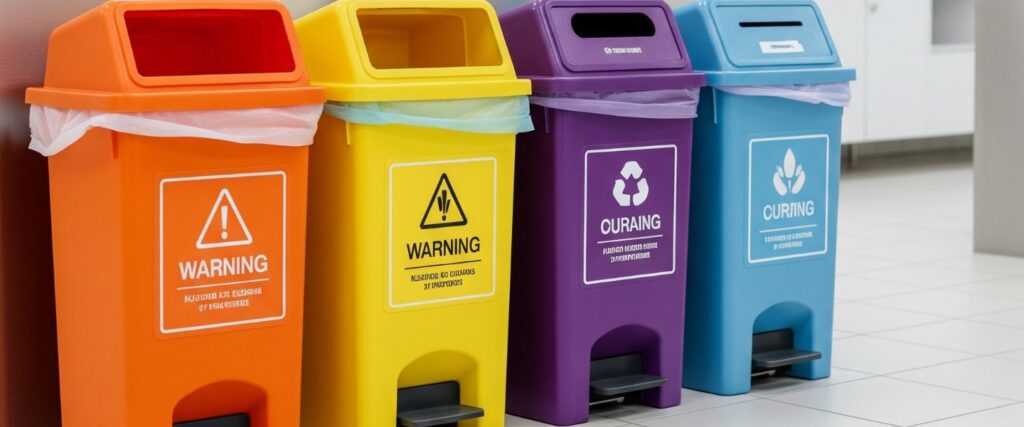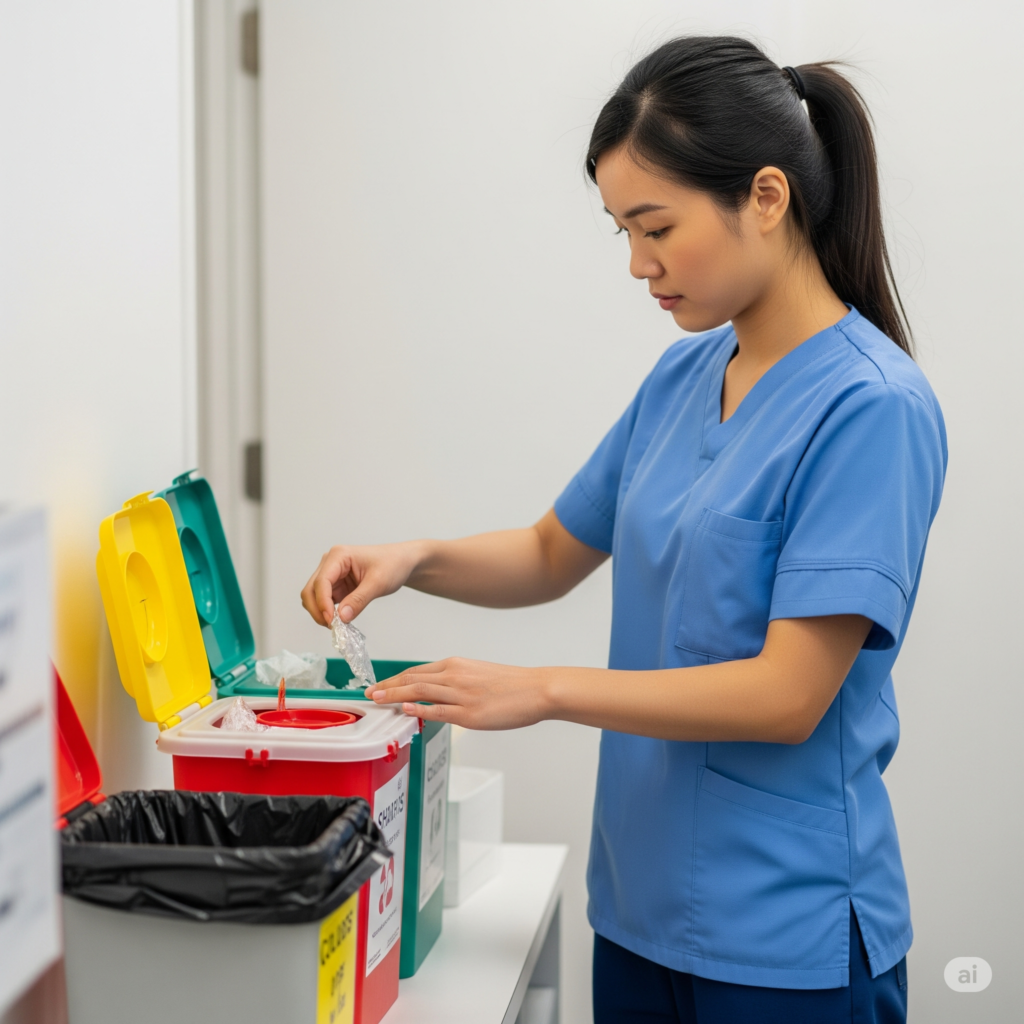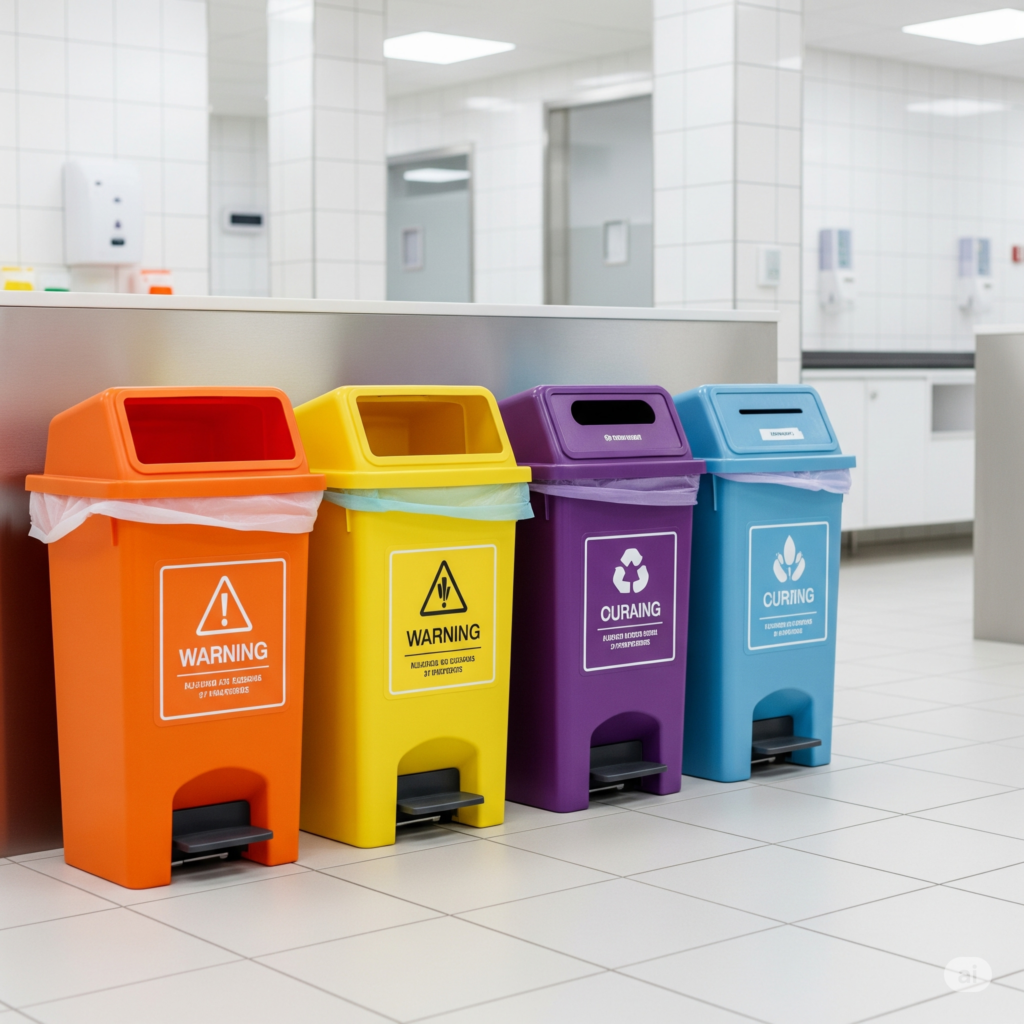It’s 8 am. Your receptionist flags a missed clinical waste collection. The yellow bin is full, someone’s put dressings in the tiger bag, and tomorrow’s your CQC inspection. Sound familiar? For busy Practice Managers, Care Home Leads, and Clinic Admins, waste management isn’t just messy; it’s a legal minefield.
But it doesn’t have to be!
Understanding the UK’s core principles of segregation, storage, and disposal transforms compliance from chaos into a smooth, manageable process. And with an expert partner like Aspin FM handling the system, you stay compliant without the constant stress.
What is Clinical Waste?
In the UK, clinical waste is defined under the Controlled Waste Regulations 2012. It includes:
- Human or animal tissue
- Blood or other bodily fluids
- Excretions
- Drugs or pharmaceutical products
- Swabs, dressings, and items contaminated with bodily fluids
- Sharps (e.g. needles, scalpels)
If it poses a risk of infection or harm, it counts. And how you handle it matters.
Colour-Coded Clinical Waste System

Get this wrong, and you could be breaching CQC standards and hazardous waste laws. Here’s what goes where:
- Orange Bags: For waste contaminated with blood/body fluids that do not require incineration. Examples include gloves, masks, and dressings from non-infectious patients. This waste can be treated using heat (alternative treatment).
- Yellow Bags/Bins: Used for infectious waste that must be incinerated. Typically includes waste from known infectious patients or areas designated for isolation.
- Purple Bags/Bins: Reserved for cytotoxic/cytostatic waste, such as items associated with chemotherapy or hormone treatment. Requires incineration at extremely high temperatures.
- Yellow & Black Striped (‘Tiger’) Bags: For offensive hygiene waste that’s not infectious but may be unpleasant. Examples: nappies, incontinence pads, and sanitary products. These go to deep landfills.
- Blue Bins: For non-hazardous pharmaceutical waste like out-of-date medicines that aren’t cytotoxic. It must be incinerated.
- Red-Lidded Sharps Bins: Used for sharps (needles, scalpels) contaminated with blood or other bodily fluids. Requires incineration.
This system is a cornerstone of healthcare waste compliance. Consistent use prevents cross-contamination, reduces risk, and ensures compliance with CQC waste disposal requirements.
The Three Pillars of On-Site Compliance

1. Segregation (At the Point of Creation)
This is the most critical step. The person generating the waste must place it in the correct container immediately. One wrong item can compromise a full bag, delay disposal, and result in a compliance breach.
2. Storage (Secure & Time-Limited)
All clinical waste must be stored in a secure, locked area that is inaccessible to patients. Bins and cages should be clearly labelled, cleaned regularly, and never overfilled. Most waste types must be collected within 7 days (or 72 hours without refrigeration).
3. Documentation (The Paper Trail)
You must keep:
- Waste Transfer Notes (for non-hazardous waste)
- Consignment Notes (for hazardous waste)
These must be held for 2–3 years and made available during CQC inspections or Environment Agency audits.
Legal Framework
Your obligations are backed by law:
- Environmental Protection Act 1990: Establishes the legal Duty of Care for all businesses handling waste.
- Hazardous Waste Regulations 2005: Outlines how hazardous materials, including most clinical waste, must be stored, transported, and documented.
Two key bodies oversee this process:
- The Environment Agency: Enforces waste disposal and storage laws.
- Health and Safety Executive (HSE): Ensures safe handling of waste by your staff.
Failing to meet these standards can result in fines, audits, or enforcement action, so it pays to stay prepared.
The Role of an FM Partner in Managing Clinical Waste

Let’s be clear: while a licensed waste carrier is legally required to transport clinical waste, Aspin FM is the partner that manages your on-site compliance system.
We provide bags, structure, process, and peace of mind:
- Implementing Protocols: We establish fully compliant, colour-coded bin systems across your site.
- Supply Chain Management: We ensure you have the correct, UN-approved containers on hand at all times.
- Storage Area Oversight: We monitor and maintain waste storage areas so they’re clean, secure, and compliant.
- Liaison with Licensed Carriers: We coordinate collections and schedules with trusted, approved carriers.
- Documentation & Training Support: We maintain your paperwork and offer staff training on proper waste segregation and safety procedures.
Our goal? Take the burden off your shoulders so you can focus on running your facility, not worrying about breaches, inspections, or missing bags.
Take the Complexity Out of Compliance
Clinical waste disposal in the UK isn’t just about hygiene, it’s about legal protection, ethical responsibility, and patient safety. The rules are strict, but they don’t have to be overwhelming.Contact Aspin FM today to learn how our integrated Facilities Management services can provide you with a robust, safe, and fully compliant clinical waste management system.



